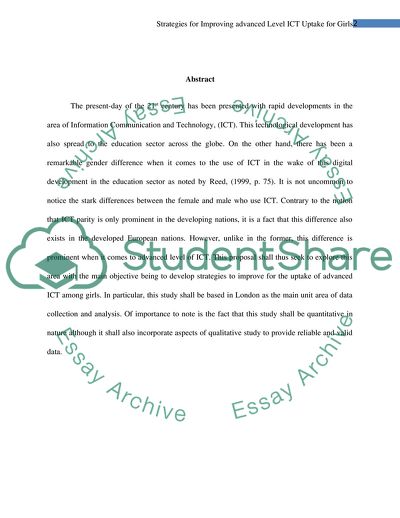Cite this document
(Strategies for Improving Advanced Level ICT Uptake for Girls Research Proposal, n.d.)
Strategies for Improving Advanced Level ICT Uptake for Girls Research Proposal. https://studentshare.org/information-technology/1730862-ict-and-gender-strategies-for-improving-advance-level-ict-uptake-of-girls-in-secondary-school
Strategies for Improving Advanced Level ICT Uptake for Girls Research Proposal. https://studentshare.org/information-technology/1730862-ict-and-gender-strategies-for-improving-advance-level-ict-uptake-of-girls-in-secondary-school
(Strategies for Improving Advanced Level ICT Uptake for Girls Research Proposal)
Strategies for Improving Advanced Level ICT Uptake for Girls Research Proposal. https://studentshare.org/information-technology/1730862-ict-and-gender-strategies-for-improving-advance-level-ict-uptake-of-girls-in-secondary-school.
Strategies for Improving Advanced Level ICT Uptake for Girls Research Proposal. https://studentshare.org/information-technology/1730862-ict-and-gender-strategies-for-improving-advance-level-ict-uptake-of-girls-in-secondary-school.
“Strategies for Improving Advanced Level ICT Uptake for Girls Research Proposal”. https://studentshare.org/information-technology/1730862-ict-and-gender-strategies-for-improving-advance-level-ict-uptake-of-girls-in-secondary-school.


